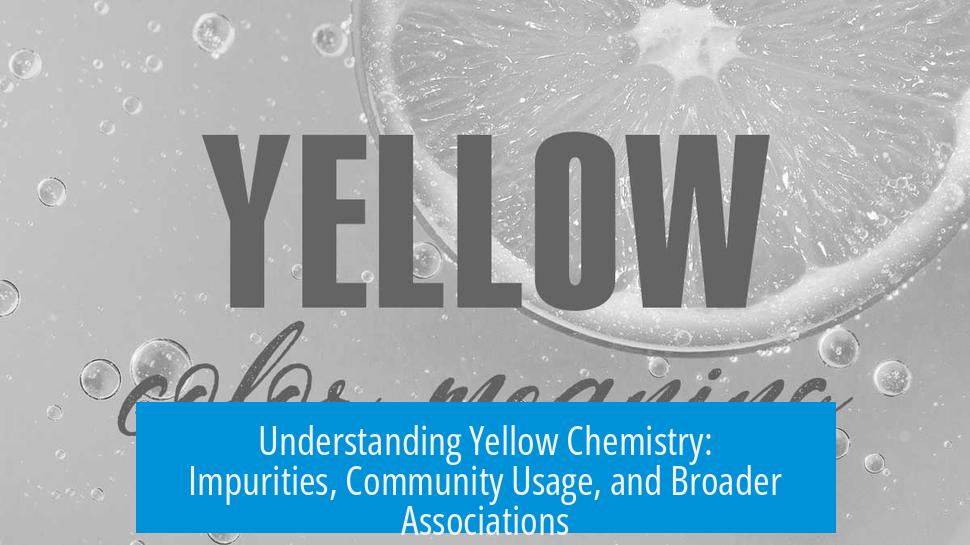What is “Yellow Chemistry”?
“Yellow chemistry” is a humorous term used in organic chemistry to describe reaction mixtures that turn yellow, indicating the presence of impurities or unwanted by-products, which usually signify a failed or flawed synthesis.
Yellow Color as a Sign of Impurities
In organic synthesis, a pure product is often colorless or has a specific expected color. When a reaction solution turns yellow, it suggests contamination by side products or incomplete reactions. This yellow tint is a red flag for chemists, frequently pointing to poor yield or impurities.
For example, if after a reaction workup the solution shows a yellow shade, the chemist knows to suspect degradation, oxidation, or residual reagents, which compromise the target compound’s purity.
Jocularity and Community Usage
- The term “yellow chemistry” is often used jokingly to express frustration about unclean reactions.
- A common humorous phrase is: “All yellow chemistry is TRASH,” reflecting a cynical view of yellow-colored outcomes.
- Such jokes originate from chemists observing routine failures masked by unwanted color changes.
Broader Associations of Yellow in Chemistry
Yellow color in chemical substances frequently signals danger or toxicity. Many hazardous compounds, such as chromium compounds, mustard gas, phosgene, and some radioactive materials, exhibit yellow coloration. This adds a cultural layer to the negative view of yellow in chemistry.
Additionally, “yellow chemistry” can sometimes be a metaphor referencing biased or sensationalized reports (similar to “yellow journalism”) or applied colloquially to pyrotechnics, due to the bright colors in fireworks.
Summary Table
| Aspect | Explanation |
|---|---|
| Primary Meaning | Impure or failed reaction indicated by yellow coloration in organic synthesis |
| Common Usage | Joke among chemists signaling contamination or unwanted by-products |
| Extended Meaning | Refers to hazardous chemicals, pyrotechnics, or metaphorical usage resembling yellow journalism |
| Color Connotation | Often linked to toxicity, caution, or poor experimental results |
Key Takeaways
- Yellow color in organic reactions usually means impurities or failed synthesis.
- “Yellow chemistry” is chiefly a humorous chemist phrase expressing reaction flaws.
- The color yellow often corresponds to dangerous or toxic substances in chemistry.
- The term extends metaphorically but has no formal scientific definition.
What does “yellow chemistry” mean in organic chemistry?
It refers to reactions producing yellow solutions, usually indicating impurities or unwanted by-products. The yellow color shows the reaction likely did not go well.
Why is yellow color considered bad in chemistry experiments?
Yellow often signals impurities or low yield. Many hazardous chemicals are yellow, so the color warns of problems or contamination in a sample.
Is “yellow chemistry” ever used outside organic chemistry?
Yes. Colloquially, it can refer to people who make fireworks or be a play on “yellow journalism” applied to biased chemical processes.
Why do chemists joke about “yellow chemistry”?
It’s a humorous way to criticize failed experiments. The phrase suggests that yellow discoloration means the result is “trash” or unusable.
How does “yellow chemistry” relate to “yellow journalism”?
Sometimes used metaphorically, it implies sensationalism or biases in chemistry, especially with acids or chemical reactions, similar to how yellow journalism distorts facts.





Leave a Comment